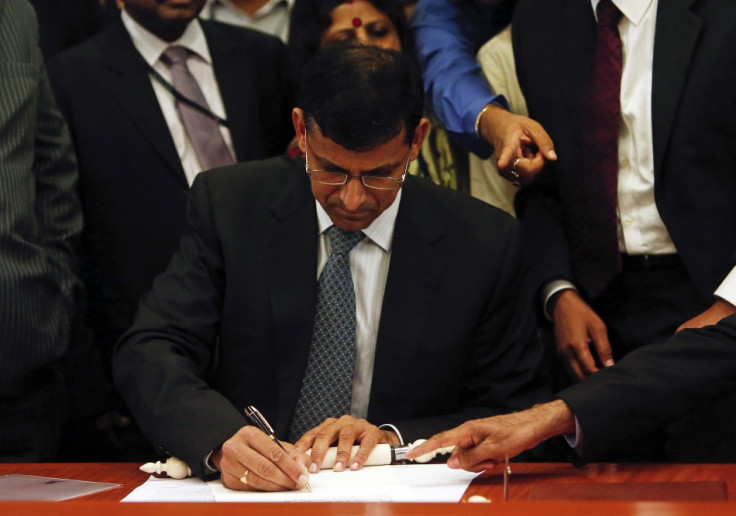India Crisis: Wholesale Price Inflation Rises Again Adding to RBI Chief Raghuram Rajan's Worries

India's wholesale price inflation rose again on the rupee slump and higher vegetable prices, adding to worries of central bank chief Raghuram Rajan ahead of his first policy review on 20 September.
Wholesale price inflation rose for the third consecutive month in August to 6.1% from 5.8% in July, according to the Commerce Ministry. Analysts estimated an inflation rate of 5.7% on average.
The higher inflation was partly due to a rise in oil prices in line with a fall in the value of the rupee. The country sources the majority of its energy needs from oil imports, and the rising costs of oil amid a war tension in Syria have been a major concern for the government, which is already suffering from a huge current account deficit.
In addition, India has suffered from heavy rainfall so far in 2013, resulting in high food prices, especially of vegetables. Food prices in general have increased by 18.8% from the previous year.
Vegetable prices rose by 77.8%, primarily due to a 245% increase in the price of onions. Essential food items like rice, cereals, egg, meat and fish also witnessed price rises. Meanwhile, potato prices fell by about 15%.
Dilemma for Rajan
The newly-appointed Reserve Bank of India (RBI) governor Rajan is due to hold his first policy review meeting on 20 September.
He will have to decide whether to lower interest rates in order to boost slowing economic growth as demanded by industries, or leave interest rates unchanged for the third straight time to avert shocks of a fresh rise in inflationary pressures.
Rajan delayed the September review to consider the US Federal Reserve's meeting, as the authority there is expected to cut its monthly bond-buying programme.
Fears of such tapering have negatively affected currencies in emerging markets, and the rupee has lost nearly 20% of its value since April. The currency plunged to an all-time low of 68.80 against the US dollar in August.
Rajan earlier promised to further liberalise financial markets and the banking sector to tackle the country's economic issues. In addition, the government has undertaken measures, including easing rules for foreign institutional investors to purchase government bonds, as the country looks to attract more foreign investment to curb the slide in the rupee.
The policies have helped the rupee, which recovered from a big slump.
Daniel Martin, economist at Capital Economics, expects that the RBI "will keep policy rates on hold and keep them there for a while."
"In our view, rising wholesale price inflation will take rate cuts off the agenda until well into next year," he said.
"We think that Fed tapering is almost certainly factored in by markets at this stage. Moreover, if the rupee did fall again, it is by no means certain that rate hikes that further undermine confidence in the economic outlook would be of much use in supporting the currency."
The RBI has further headroom to remain focused on financial market stability given the country's narrowing trade deficit and low core inflation, according to Roland Randall of ANZ Research.
"We think the RBI will soon ease some of the recently imposed liquidity-tightening measures," he said.
"However, we cannot rule out the possibility that further tightening will come first, such as an increase in the Cash Reserve Ratio."
© Copyright IBTimes 2025. All rights reserved.






















